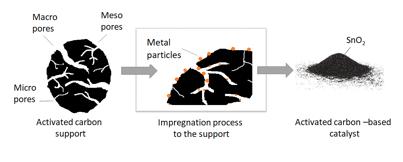Lactic acid fermentation in spruce (saw dust) hydrolysate Spruce (saw dust) hydrolysates have been provided by Sekab AB. For these hydrolysates, saw dust has been used in a process to generate hydrolysates containing sugars (figure 3). Various modes of fermentation and process parameters, including addition of detoxifying agents, have been investigated. The resulting yields of sugars and lactic acid have been analyzed by RISE Processum and Centria. Successful 50L pilot scale lactic acid fermentations have been performed using saw dust as raw material.
Figure 3. Saw dust (left) has been converted to hydrolysate (middle) through pretreatment and enzymatic hydrolysis and has subsequently been used to produce lactic acid (right)
1.2.2 RESULTS Enzymatic hydrolysis Amounts of biomass and enzyme used in the hydrolysis reactions have been evaluated. The results indicate that the conversion of the cellulose present in the biomass to fermentable glucose is increasingly efficient with higher loading of both biomass and enzyme (figure 4). The process is most productive within the first 24 hours of the reaction.
Lactic acid fermentations The lactic acid fermentation experiments described here are outtakes of the most representative activities performed during the project. A full description of all experiments performed is beyond the scope of the report. The initial experiments were performed using a bacterial strain that produces a mixture of the two isoforms of lactic acid, D-lactic acid and L-lactic acid. Analyses of the PLA resulting from the fermentations revealed that it contained mesoform PLA as well as monomers of lactic acid. Since the properties of the resulting PLA from such a mixture is inferior to a more optically pure PLA, that is, containing either D- or L-lactic acid, we sought to isolate a bacterial strain that could produce either of the lactic acid isoforms. Isolation of several lactic acid producing strains was performed at the industrial site of RISE Processum AB and one of the strains, producing mostly L-lactic acid, were used in subsequent fermentation experiments. Lactic acid fermentations have been up-scaled from laboratory scale to 50L pilot scale (figure 5).
8
GREEN BIORAFF SOLUTIONS








